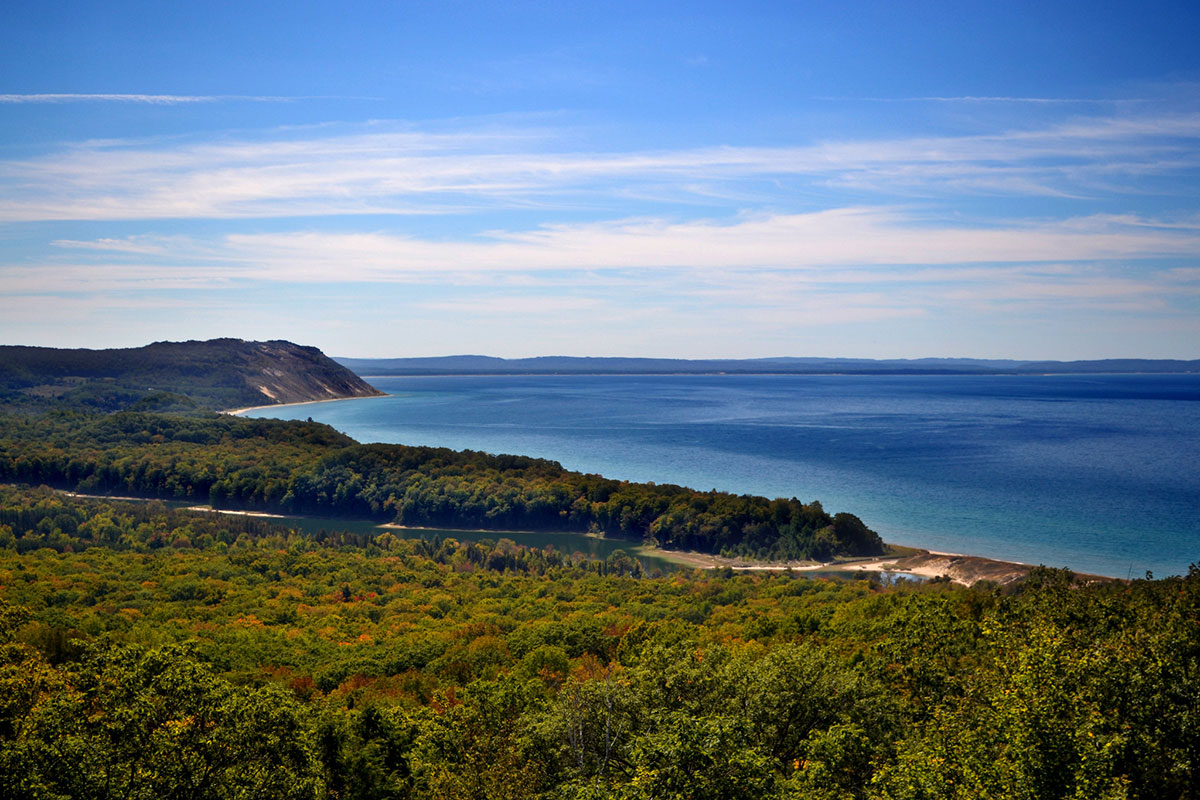
Photo by Todd Marsee, Michigan Sea Grant
Exploring approaches for the conservation and stewardship of 30 percent of Michigan’s coastal and open waters of the Great Lakes by 2030
The state of Michigan needs a detailed plan and course of action for how we can contribute to the national “America the Beautiful” framework. “America the Beautiful” - the national call to “work together to conserve, connect, and restore at least 30 percent of our lands and waters by 2030 for the sake of our economy, our health, and our well-being” is part of a larger UN global framework to conserve biodiversity.
“Michigan the Beautiful” is an effort led by a partnership between The Nature Conservancy (TNC) and the Michigan Department of Natural Resources (DNR) that engages rights holders and others potentially affected by potential stewardship actions or protection. Michigan the Beautiful partners are gathering input from conservation organizations, the public, Anishinaabe nations, and other government agencies. They will develop analyses and tools to support statewide efforts to collaboratively conserve, restore, and connect 30 percent of our land and water by 2030 as part of a journey toward a thriving Michigan. In June 2024, Governor Whitmer announced that Michigan had accepted the President’s invitation to join the America the Beautiful Freshwater Challenge.
The University of Michigan Water Center and team members from the U-M School for Environment and Sustainability (SEAS), working with a SEAS Master’s project team, are collaborating with the Michigan the Beautiful partnership to focus on the coastal and Great Lakes components of the work. The project team is providing analyses, tools, and management recommendations that would enable public and private actors in Michigan to contribute toward the 30 percent goal. This is the first assessment of what implementing Michigan the Beautiful could mean for the Great Lakes.
Project Team
- Project Lead: Dr. Jennifer Read, University of Michigan Water Center
- Co-investigators: Dr. Mike Shriberg, School for Environment and Sustainability, CIGLR and Michigan Sea Grant, University of Michigan
- Mr. Shannon Brines, School for Environment and Sustainability, University of Michigan
- Sarah Miller, University of Michigan Water Center
- SEAS MS Master’s Student Team Members: AiLi Pigott, Alicia Echeveste, Cailin Young, Calvin Floyd, Longyu Xue (Ciara), Lauren Talbot
Resources
- Governor Whitmer accepts invitation to join White House initiative
- A New Global Framework for Managing Nature Through 2030: 1st Detailed Draft Agreement Debuts - United Nations Sustainable Development
- America the Beautiful | U.S. Department of the Interior
- Kunming-Montreal Global Biodiversity Framework (GBF)
- Why we need 30x30: Protect 30% of land & water by 2030
- Higgens et al 2021- Durable Freshwater Protection: A Framework Establishing and Maintaining Long-Term Protection for Freshwater Ecosystems and the Values They Sustain
- Pathway for Inland waters in the 30 by 30 target – Discussion document
- Durable Freshwater Protection - The Nature Conservancy